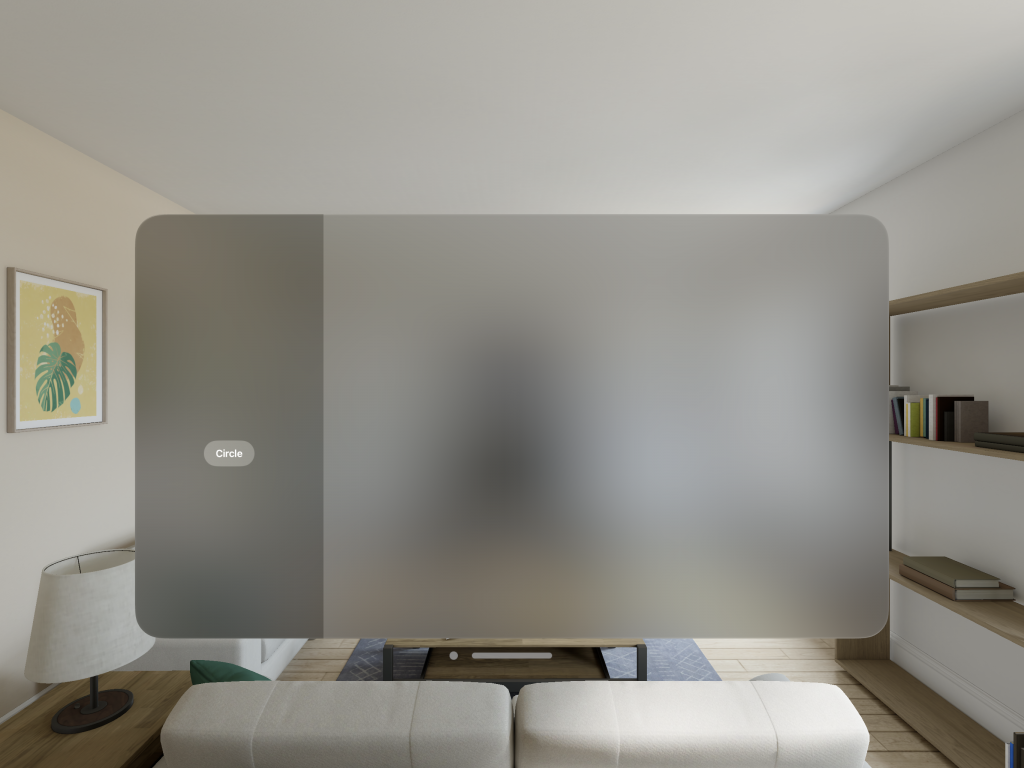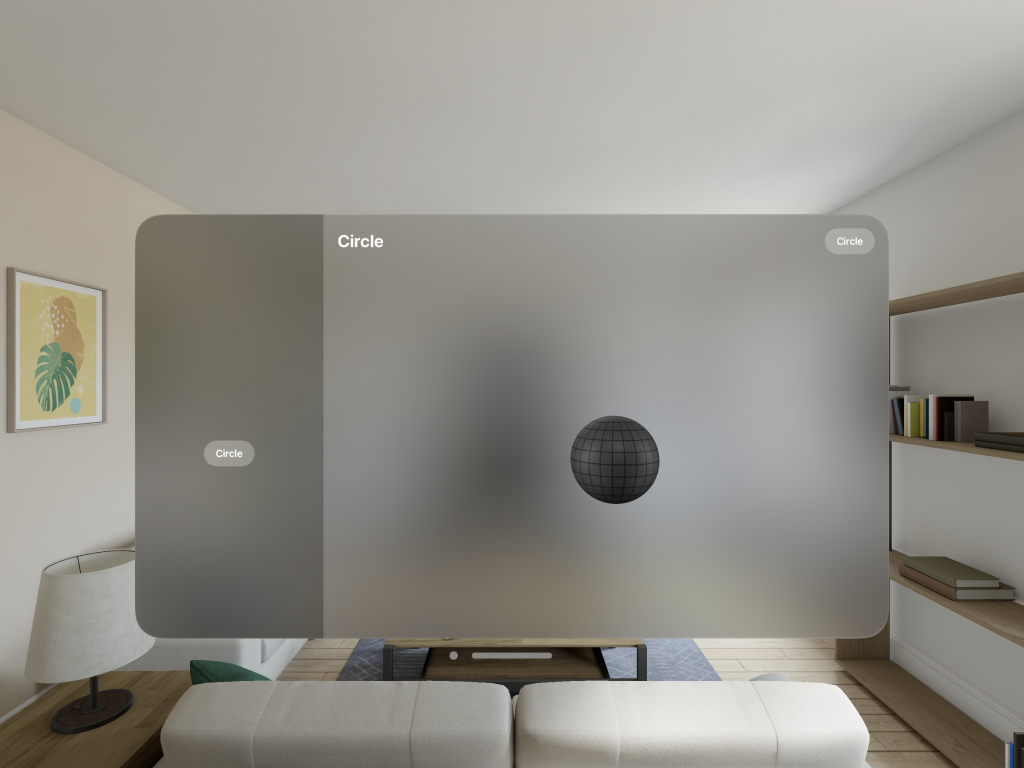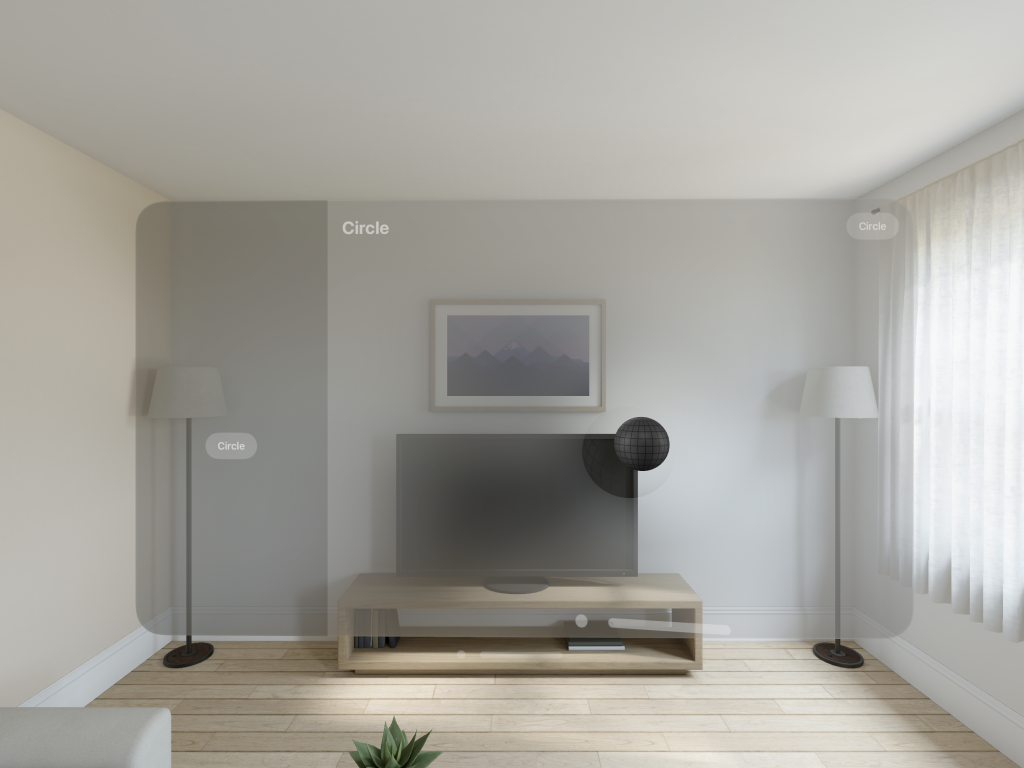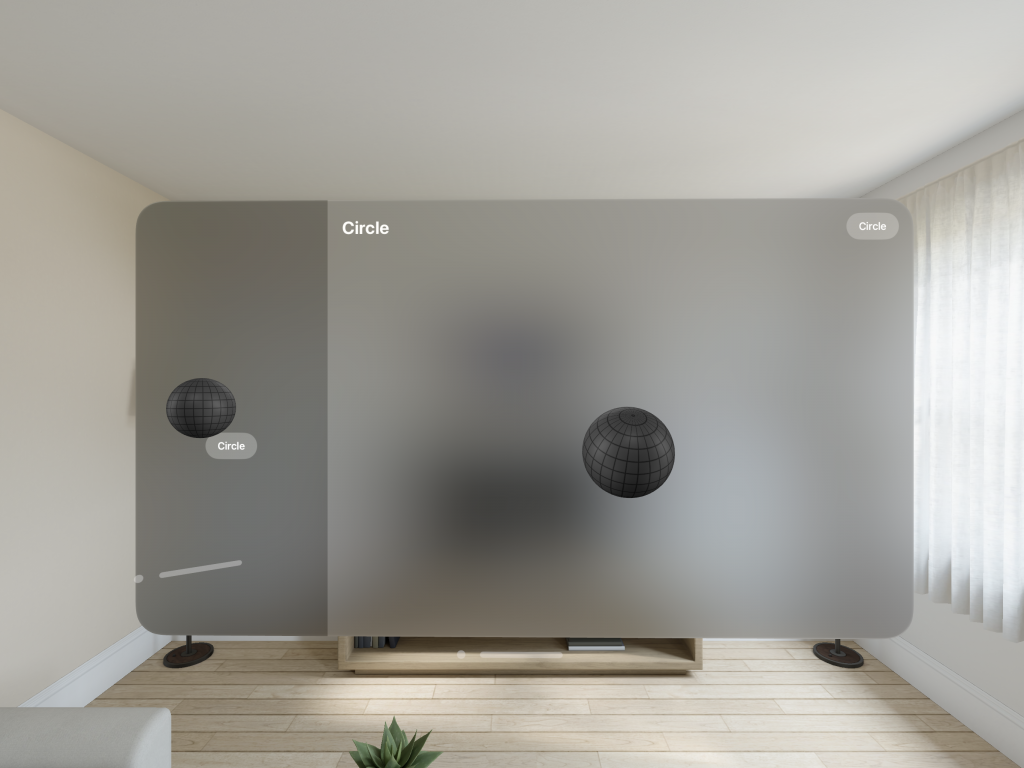模型除了可以以視窗方式呈現,也可以獨立存在,換句話說就是可以將模型從視窗內拖曳到空間的任何位置。
首先,新增一個子View,將讀取模型的程式碼放在子View之內:
struct ContentView: View {
var body: some View {
EarthDetailView()
}
}
struct EarthDetailView: View {
var body: some View {
Model3D(named: "Scene", bundle: realityKitContentBundle)
.padding(.bottom, 50)
}
}
加入手勢操作,手勢可以針對垂直方向去滑動3D模型:
struct EarthDetailView: View {
@State private var verticalRotation = CGFloat.zero
@State private var endVerticalRotation = CGFloat.zero
var body: some View {
Model3D(named: "Scene", bundle: realityKitContentBundle)
.rotation3DEffect(
.degrees(-verticalRotation), axis: .x
)
.gesture(
DragGesture()
.onChanged({ value in
verticalRotation = value.translation.height + endVerticalRotation
})
.onEnded({ _ in
endVerticalRotation = verticalRotation
})
)
}
}
這裡宣告了兩個變數verticalRotation與endVerticalRotation,用來儲存目前手勢拖曳的位置,verticalRotation表示儲存正在拖曳的位置,endVerticalRotation表示儲存結束拖曳的位置。
產生拖曳的效果在gesture屬性內,加入一個DragGesture物件,有兩個控制函式,透過onChanged會回傳正在拖曳的位置。onEnded會回傳結束拖曳的位置。
最後再透過rotation3DEffect屬性,去控制3D模型轉動的範圍。
而目前這裡只有控制垂直方向,水平方向同理:
struct EarthDetailView: View {
@State private var horizontalRotation = CGFloat.zero
@State private var verticalRotation = CGFloat.zero
@State private var endHorizontalRotation = CGFloat.zero
@State private var endVerticalRotation = CGFloat.zero
var body: some View {
Model3D(named: "Scene", bundle: realityKitContentBundle)
.rotation3DEffect(
.degrees(horizontalRotation), axis: .y
)
.rotation3DEffect(
.degrees(-verticalRotation), axis: .x
)
.gesture(
DragGesture()
.onChanged({ value in
horizontalRotation = value.translation.width + endHorizontalRotation
verticalRotation = value.translation.height + endVerticalRotation
})
.onEnded({ _ in
endHorizontalRotation = horizontalRotation
endVerticalRotation = verticalRotation
})
)
}
}
使用NavigationSplitView元件,將按鈕與3D模型的子View放入:
struct ContentView: View {
var body: some View {
NavigationSplitView {
Button(action: {
}, label: {
Text("Circle")
})
} detail: {
EarthDetailView()
.navigationTitle("Circle")
.toolbar {
Button(action: {
}, label: {
Text("Circle")
})
}
}
}
}
顯示如圖:

按下按鈕之後,模型就會出現:
顯示如圖:

為了要讓模型可以獨立呈現,在toolbar內加入一個openWindow指令,表示可以開啟另外一個視窗:
EarthDetailView()
.navigationTitle("Circle")
.toolbar {
Button(action: {
openWindow(id: "creatureWindow", value: "")
}, label: {
Text("Circle")
})
}
在這個openWindow指令帶入一個id為creatureWindow,必須要多宣告另外一個WindowGroup,讓這裡的openWindow可以順利啟動另外一組WindowGroup:
@main
struct DemoVisionApp: App {
var body: some Scene {
WindowGroup {
ContentView()
}
WindowGroup(id: "creatureWindow", for: String.self) { $modelName in
EarthDetailView()
.padding3D([.back, .top], 250)
}
.windowStyle(.volumetric)
.defaultSize(width: 0.5, height: 0.5, depth: 0.5, in: .meters)
}
}
多宣告一個WindowGroup,id一樣帶入creatureWindow,並且在內部放入EarthDetailView這個子View。
按下右上角的toolbar按鈕之後,就會另外開啟新的視窗:
顯示如圖:

而這個3D模型視窗,也可以任意拖曳到空間之內:
顯示如圖:

完整程式碼:
import SwiftUI
import RealityKit
import RealityKitContent
struct ContentView: View {
@State var isEarth = false
@Environment(\.openWindow) private var openWindow
var body: some View {
NavigationSplitView {
List {
Button(action: {
isEarth.toggle()
}, label: {
Text("Earth")
})
}
} detail: {
if isEarth {
EarthDetailView()
.navigationTitle("Earth")
.toolbar {
Button(action: {
openWindow(id: "creatureWindow", value: "")
}, label: {
Text("Earth")
})
}
}
}
}
}
struct EarthDetailView: View {
@State private var horizontalRotation = CGFloat.zero
@State private var verticalRotation = CGFloat.zero
@State private var endHorizontalRotation = CGFloat.zero
@State private var endVerticalRotation = CGFloat.zero
var body: some View {
Model3D(named: "Earth", bundle: realityKitContentBundle)
.rotation3DEffect(
.degrees(horizontalRotation), axis: .y
)
.rotation3DEffect(
.degrees(-verticalRotation), axis: .x
)
.gesture(
DragGesture()
.onChanged({ value in
horizontalRotation = value.translation.width + endHorizontalRotation
verticalRotation = value.translation.height + endVerticalRotation
})
.onEnded({ _ in
endHorizontalRotation = horizontalRotation
endVerticalRotation = verticalRotation
})
)
}
}
從 SwiftUI 到 Apple Vision Pro - SwiftUI 從零開始 Day24 [完]
